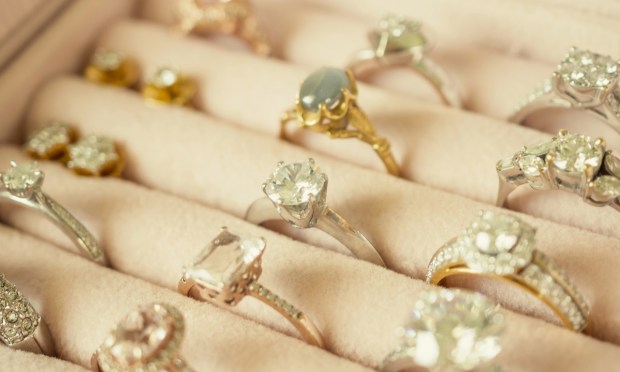Jewelers Are Making Financing as Personal as Their Creations

Unlike Tiffany’s or Cartier, Daniel’s Jewelers has recognized the importance of financing in making jewelry accessible to its customers.
“We understand that not everyone may have the immediate means to afford their desired ring or piece of jewelry in full. Therefore, financing has been ingrained in the core principles of our business from the very beginning,” said David Sherwood, the company’s CEO, in an interview with PYMNTS. “Credit has always been foundational to what we do.”
In fact, Sherwood notes that a significant portion of the company’s financing is managed internally, with about half of the business being financed through their own resources. Alongside their diverse network of partners, including prime and second-look financing providers, as well as leasing companies, Daniel’s Jewelers maintains control over a substantial portion of their financing arrangements.
These arrangements are underwritten and collected in-house, rather than being sold off to other entities. By retaining their financing on their own books, they possess the flexibility to offer personalized solutions, enabling them to approve financing requests for a wide range of customers. However, it is worth noting that customers have the option to use their preferred financing provider if they so desire.
Daniel’s Jewelers Keeps Control
According to Sherwood, Daniel’s Jewelers has the power to accept or reject financing applications from a wide variety of customers.
See also: Sezzle Marks 3rd Straight Profitable Quarter as BNPL Volumes Grow
“We have encountered numerous customers whose credit history may not appear favorable when assessed through traditional credit bureaus. However, these customers have been loyal to us for long periods,” he said.
Regardless of how these customers may be portrayed in credit reports, the company understands their payment behaviors and can tailor interest rates based on their financial narrative and history with the company. This strategic approach not only helps the jeweler better serve its customers but also allows it to generate an additional revenue stream that is proving to be somewhat lucrative.
See also: PayPal Buy Now, Pay Later Grabs $6B of Payment Volumes, Up 70%
An Informed Retail Experience
As financing plays a pivotal role in Daniel’s Jewelers experience — approximately 90% of their sales involve some form of financing — retail associates are required to possess expertise in finance, which is acquired through experience over time.
When interacting with customers, the process begins by inquiring about their existing credit relationship with the company, followed by initiating an internal waterfall product — an application. Basic information such as name, address, and cell phone number is collected, and subsequent verifications take place. This information is then simultaneously sent to multiple partners, and the best offer that aligns with the customer’s needs is obtained. Various factors come into play, including interest-free offers for customers with excellent credit and fewer offers for those with poor credit. Each offer has its own advantages and disadvantages.
Mitigating risk is achieved through different methods, with downpayment being a significant aspect of their own book of business. Additionally, leasing options are available, although they may involve limited application fees, and the implied interest rates tend to be higher, which helps offset the associated risks and generate profit.
Sherwood notes that the company actively engages in providing credit to first-time customers. They accommodate customers who are just beginning their credit journey, such as 18- or 19-year-olds with no credit history. This demographic constitutes a significant portion of the company’s clientele.
Jewelry Is a Personal Experience
In the retail industry, jewelry remains one of the rare sectors where the in-store and face-to-face experience maintains significant value. Shopping for jewelry remains a personal endeavor, even with the increasing use of technologies like augmented reality (AR) by brands and retailers. A noteworthy instance of this is the partnership between Tiffany & Co. and Snap, indicating their commitment to improving the jewelry shopping experience.
Despite many customers visiting the company’s website to browse through the available options, the online experience of examining a diamond ring falls short of the in-person experience.
With that in mind, Sherwood draws a parallel between buying jewelry and purchasing a TV from a store like Costco. He notes that online, items can appear different due to retouched photos. Moreover, comparing options side by side becomes challenging in the virtual space, as online platforms often struggle to accurately depict the subtle sizing and intricate details of jewelry.
Sherwood emphasizes that the allure of buying jewelry extends beyond the mere acquisition of a product. It encompasses an experiential journey and creates lasting memories, whether it involves a couple making a joint decision or one partner surprising the other. The emotions tied to the moment of seeing the ring for the first time, the planning process, and the anticipation all contribute to the genuine experiential retail aspect of jewelry shopping.
In addition to personalized financing, the company has also implemented a trade-in program which allows customers to trade in their purchased item at any time in the future for the full value they initially paid. The initiative aims to provide customers with the flexibility and assurance that their investment retains its value, fostering a sense of trust and loyalty.
Daniel’s Take on Lab Diamonds
One trend in the jewelry industry has been the shift from mined diamonds to lab-grown diamonds. Around seven to eight years ago, Daniel’s did not sell a single lab-grown diamond, and today it accounts for about half of its sales.
The rise of lab-grown diamonds has contributed to making jewelry more attainable for a broader range of customers, particularly given the escalating prices of mined diamonds. Previously, with a budget of $1,000, customers could only afford a moderately sized and intricately designed piece. However, with the availability of lab-grown diamonds, customers now can purchase a diamond that appears to be twice or sometimes even three times the size.
Furthermore, lab-grown diamonds have enabled the company to restore value to customers’ purchases. They now offer pieces akin to those seen at events like the Oscars.

